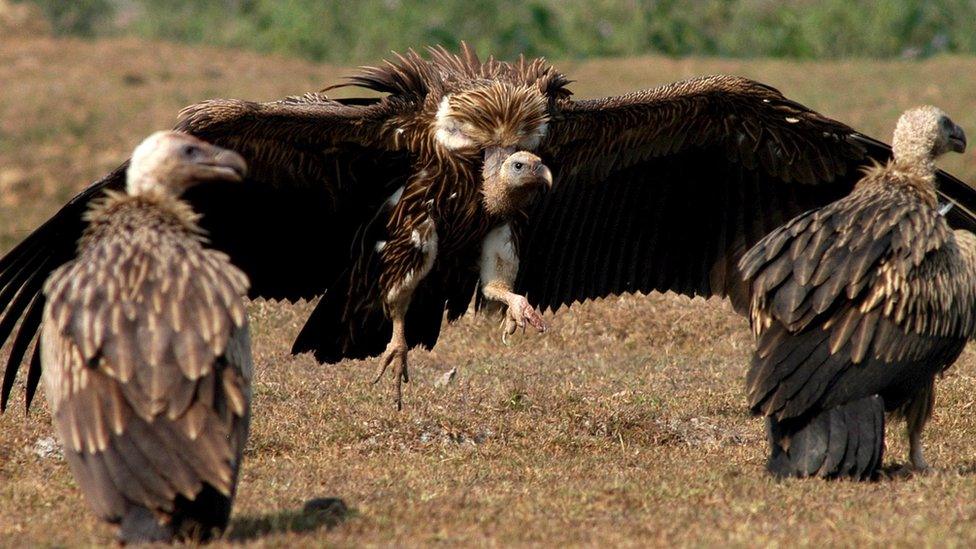Indian study puts value on vultures
- Published

Vultures play a vital role disposing of animal carcasses, but are at risk of extinction
Conservationists in India have highlighted the importance of protecting vultures by putting a value on their scavenging activity.
The International Union for Conservation of Nature (IUCN) studied the cost and volume of industrial carcass disposal in order to estimate the vultures' economic value, . It found that 600 of the endangered birds can gobble up the same amount of animal remains in a year as a medium-sized disposal plant. Compared to the cost of operating the plants, each city-based vulture's scavenging is thought to be worth 696,000 rupees ($10,200; £7,000), and about 585,000 rupees in rural areas, the study says.
The IUCN is calling for more to be spent on breeding programmes to boost the existing population. "A vulture safety zone for breeding 600 birds and releasing them in the wild would cost 75% of the cost of a medium carcass-rendering plant," says NM Ishwar, who headed the study. "It makes more sense, at least in rural areas, to invest in vulture breeding."
India's vulture population has plummeted since the 1980s, with four of its resident species listed as critically endangered on IUCN's Red List. The oriental white-backed vulture has seen by a startling 99.9% in the past two decades. The cause was identified as a non-steroidal painkiller, diclofenac, used widely in South Asia on livestock, but toxic to vultures. It has now been banned for veterinary use, but there are concerns that other drugs could also be harmful to the birds.
Next story: Russian church settles debt with prayers
Use #NewsfromElsewhere to stay up-to-date with our reports via .